Hello all,
This is the third chapter of my tutorial on building tanks from scratch. After the last installment we have the basic structure for a Devil Dog tank made from 110 lb paper and cardboard. In this chapter I’ll continue using those materials to layer on details.
If you haven’t read them already you can use the series list to the right to find the first two chapters. Here’s where I left off:
This has the right footprint and profile to fill in for a Devil Dog (or pretty much any Chimera based vehicle) in a friendly game, but it’s not much to look at. Now we can start adding details to fill it out.
The Turret
First off, it needs a turret. For most of the tank I’m using Eli Patoroch’s Banewolf template, which is a pretty good match for the current GW kit* with four tanks set into what would be the crew compartment. However, I don’t like the turret on this template, so I’m replacing it with the turret from his 23 hellhound ii (2010) template.
*Note: The template I used for the tutorial came out marginally larger than the current GW chimera kits. I’ve since re-sized the template for a closer match >22 banewolf (2010) scaled to fit GW
As Dave G. mentioned in the comments for the second part of this tutorial, these templates allow for a lot of modding potential. Swapping components is one way to get the tank you will be most happy with.
So, here’s the turret I’m using:
I decided to build this straight out of the 110 lb card stock I printed it on. It has a lot more structure to it than standard copier paper, so I think it will be sturdy enough for this turret.
If you’re using regular paper, you’ll want to glue it to something stronger. The turret is basically a box, just like the main hull and track systems.
I cut out the pieces, score the bend lines, and pre-fold everything:
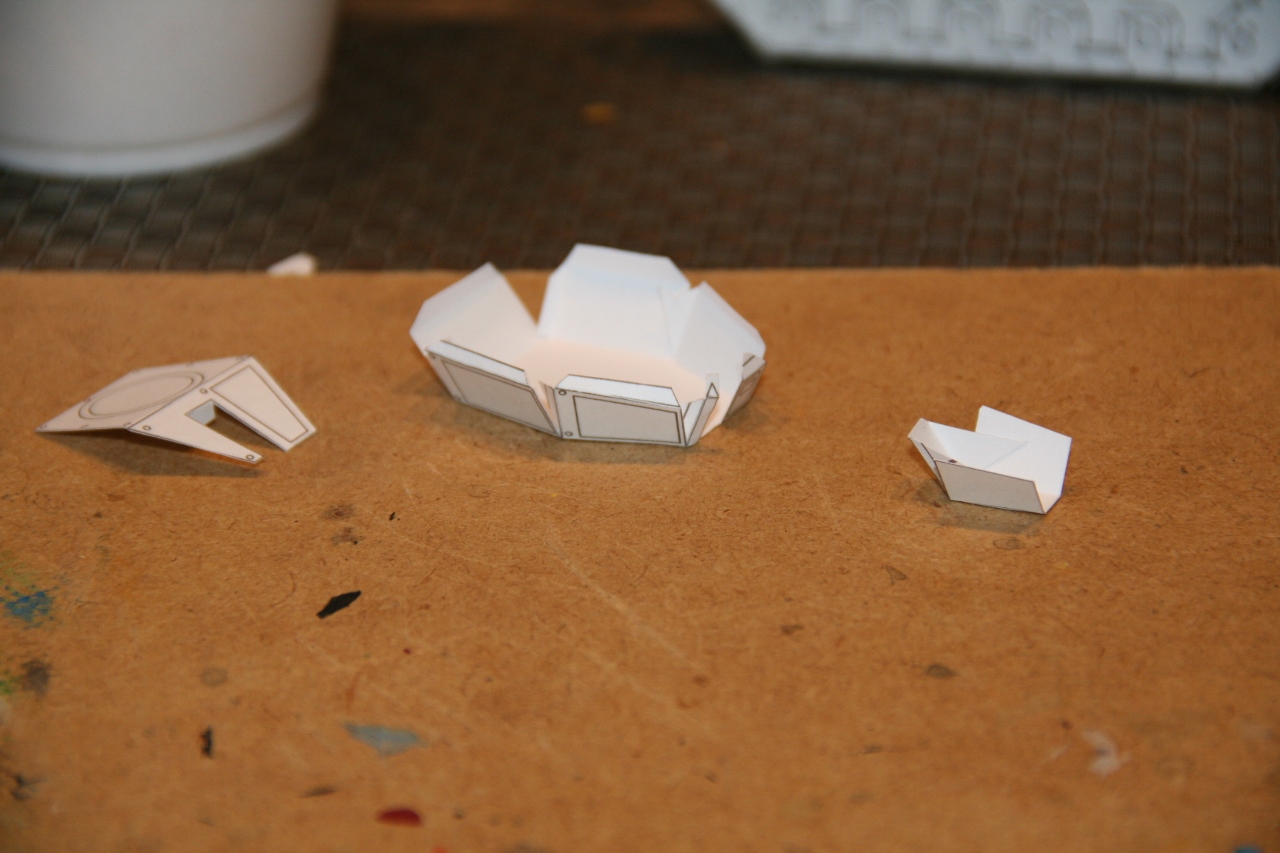
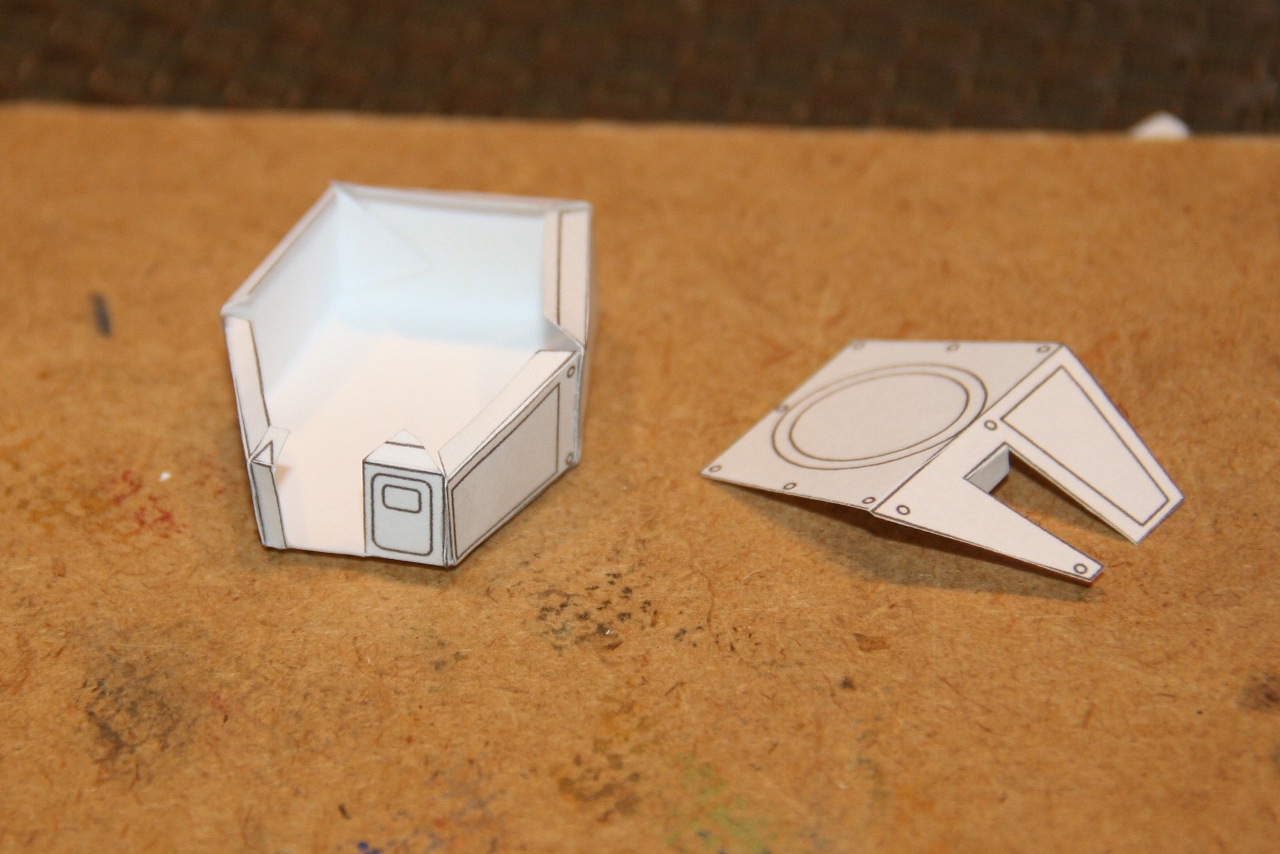
The sides are sturdy enough, but it’s a bit soft across the top. Next time I may try cutting the top piece from heavier card stock. It’s not a major problem though because I will be adding armor plates and a hatch which will add strength.
I start by gluing these pieces to the cereal box card. Then I cut them out and glue them where them on. Building with these templates is a little like putting together a simple jigsaw puzzle, you just put the pieces where they fit.
There is supposed to be a rectangular view port, but I’ve used a 1/8″ hole punch to create a round lens instead. There are a couple of detail boxes behind the turret. Like the turret itself, I cut these straight from the 110 lb stock. I cut, scored, folded, and glued the boxes (seeing a pattern here?) then glued on the little detail plate before gluing the whole box in place.
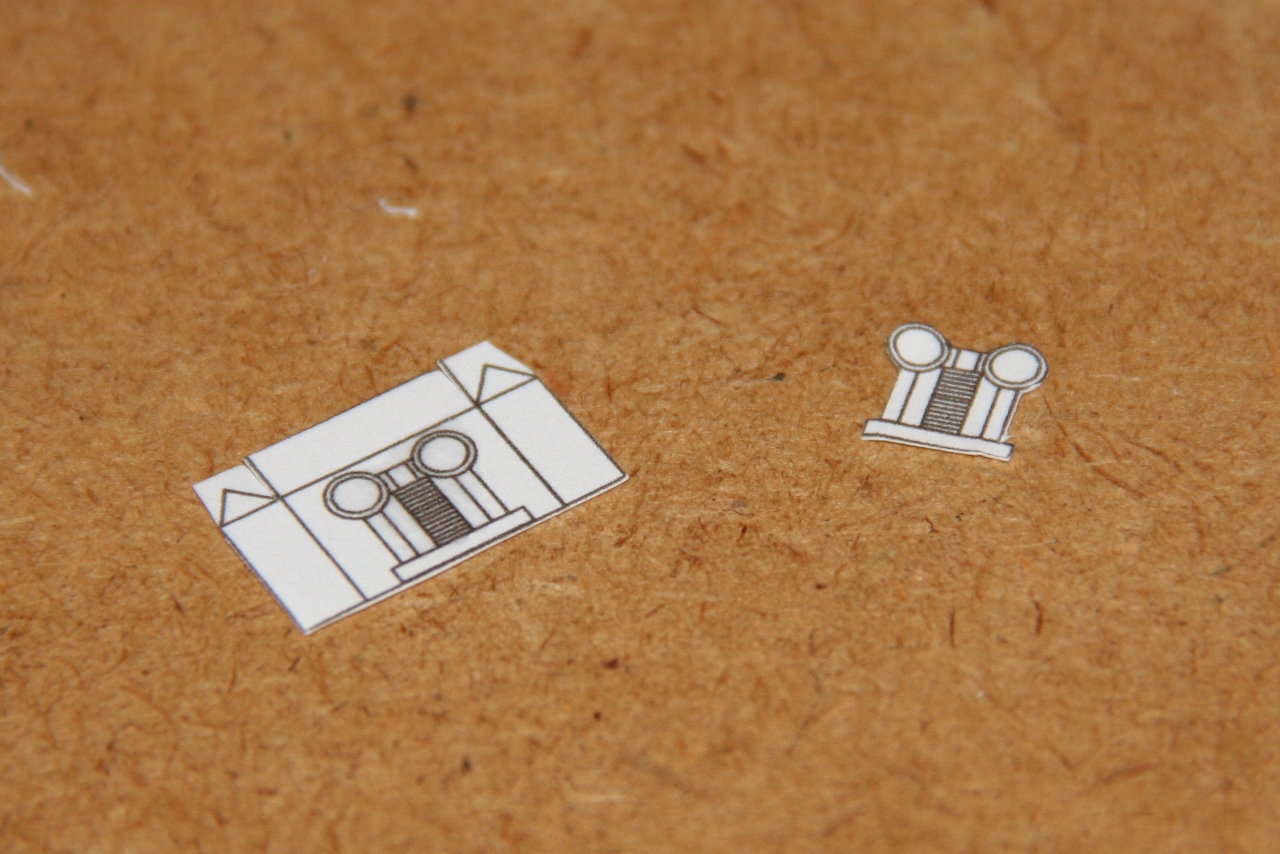
In that last picture you can also see the 1″ body washer I added as a turret mount. The turret has an identical washer glued to the bottom and the tank-side washer has a magnet glued into the hole to hold the two together.
Armor Plates & Fuel Tanks
Next I start to add the armor plates to other areas of the tank the same way I did for the turret.
In these pictures you’ll see I cut out some detail before gluing 110 lb stock to the cereal box card. This adds an extra layer of detail to the finished product.
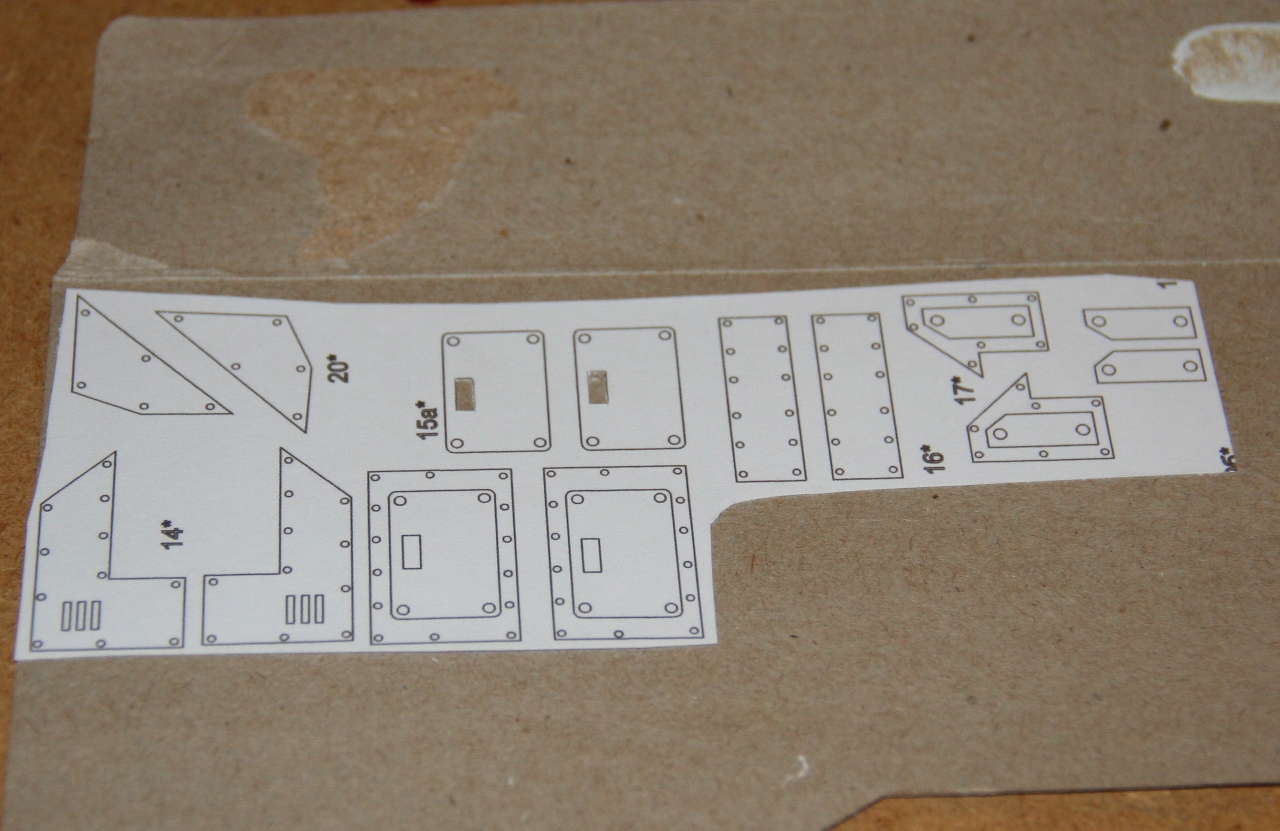
The fuel tanks in the back are each made from two circular pieces, a star-shaped piece, and a smaller circle. The large circles and stars were glued to cereal box before being cut out and glued together. The smaller circle was punched from the the cereal box using a 1/4″ hole punch.
Creating Rivets
At this stage I’m still going by the template, cutting out the detail pieces and gluing them where they fit. I glue most of the pieces to the thicker card before cutting out but some are cut straight from the 110 lb. stock to create finer details. You could also glue the template to another layer of 110 lb. stock for something in between.
For a lot of the small round details I use a hole punch that closely matches the piece rather than trying to gut out tiny circles. The larger template pieces have the smaller ones printed on them, so it is easy to figure out where the smaller pieces go and to glue them on straight.
This stage of the model requires some time and attention to detail, but not a lot of ingenuity, like pretty much any other model kit you would assemble. The templates I’ve been using are well designed and easy to work with.
All of these armor plates need some rivets to hold them in place. I have two methods that I will use for the rivets on this model. There is a third I use with styrene sheet but I’ll share that later. For now we’re sticking with mostly paper products.
Method #1
The first method is to use a 1/16″ hole punch (you can find this and the 1/8″ punch at almost any craft store in the scrapbooking section) to pop out rivet heads then glue those onto the model. I usually punch these out of plastic card but this time I decided to use the same cereal box I’ve used for the rest of the tank:
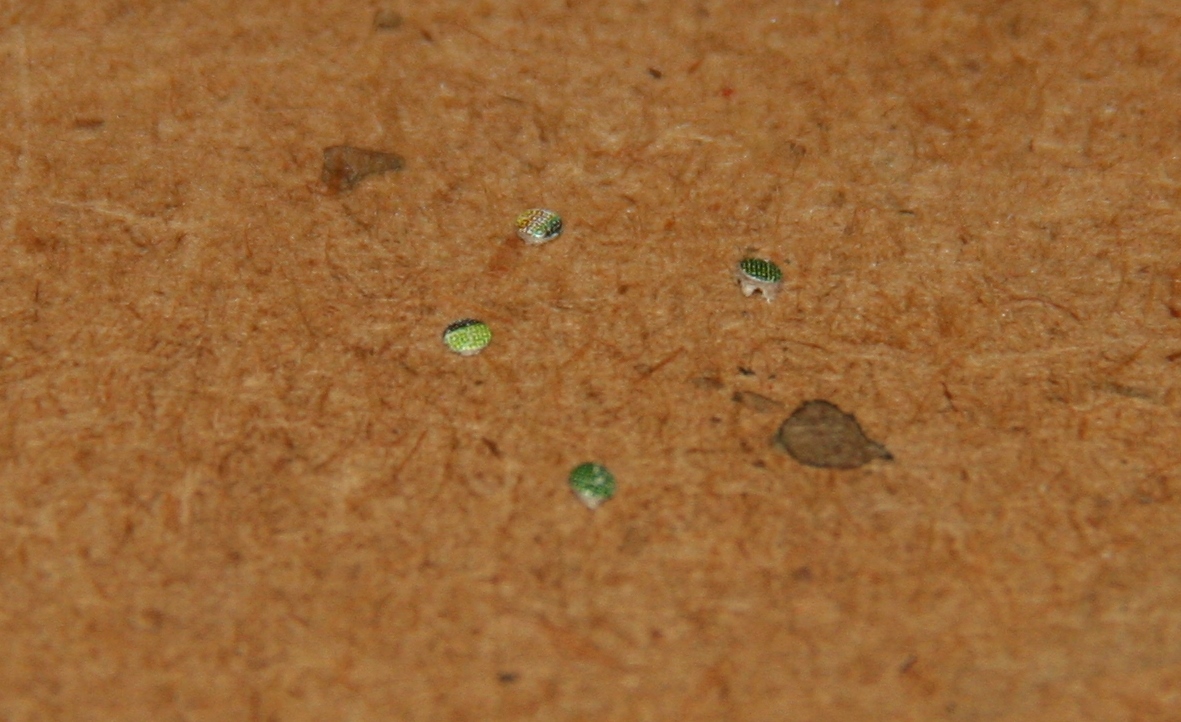
You can see I’ve added these rivets to the corners of the cargo hatch door. I’ve also used some to represent the rod ends for the track wheels concealed inside the track housing.
After punching out a bunch of rivet heads, I add small drops of superglue where I want the rivet. Then I use a lightly moistened hobby knife to pick up each rivet head and place it. If you have trouble getting small enough drops of glue on the model, you can also make a little puddle of glue on a piece of junk plastic and gently dip one side of each rivet head before placing it.
You will notice that the hole punch creates a piece that has slightly rounded edges on one side and sharper edges on the other. I try to glue them on with the rounded side out.
Method #2
The next method I’m using for rivets makes use of something slightly random that I’ve discovered. One of my dogs requires daily medication for a heart problem, and the pill bottles always contain a little canister of desiccant. I started saving them because I thought they would be good to represent storage containers. When I opened one up I found they contain hundreds of little spheres:
The canister says “DO NOT EAT”, but according to wikipedia silica gel is considered safe for consumption in small amounts. I haven’t dug out the MSDS sheet to confirm this, but I’m pretty sure they’re safe enough to work with as long as your significant other isn’t too bent out of shape over the thousands of little balls rolling around the floor and furniture (you should probably clean that up!)
If you don’t have access to these little canisters, I assume the little paper packets contain the same stuff. So, you should be able to find it somewhere.
To use these, I drill little pits into the model using a pin vice. Don’t drill all the way through! Then I add a little superglue to each pit. Use a moistened hobby knife to pick up the silica balls and press them into the pits.

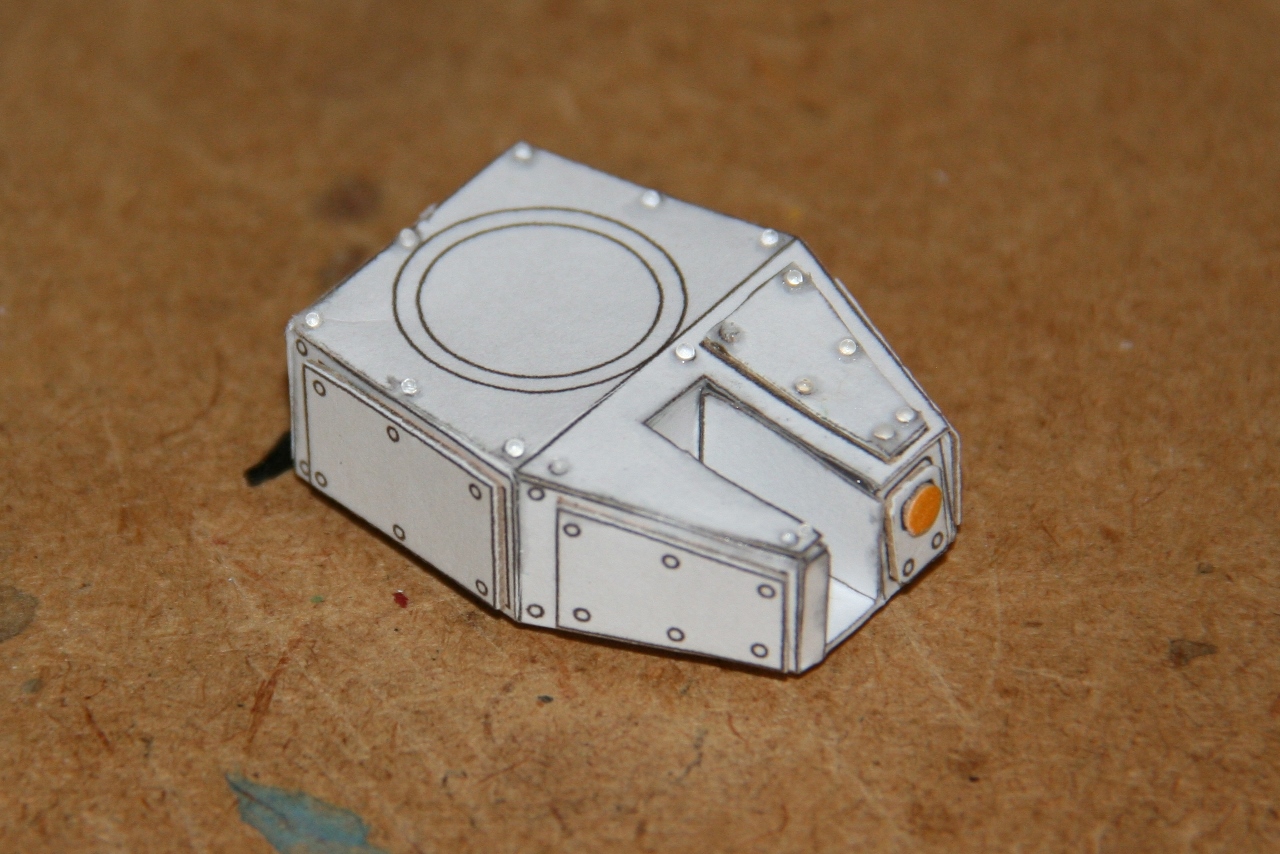
These create nice, rounded rivet heads.
The silica balls are randomly sized, so if you want completely consistent rivets you’ll need to sort them a bit. Since my tank will represent something essentially looted and maintained by Grots, I prefer the slightly random sizing. So I don’t pay too much attention to it.
This method works better with plasticard than paper because you can get a cleaner pit with the drill bit. However, it still works pretty well with the paper/cardboard as you can see.
Both of these riveting methods are a bit tedious, but the end results are worth it. You could skip the rivets and still have a decent model with welded armor plates. For my Rebel Grots I really prefer the look of rivets.
The Result So Far
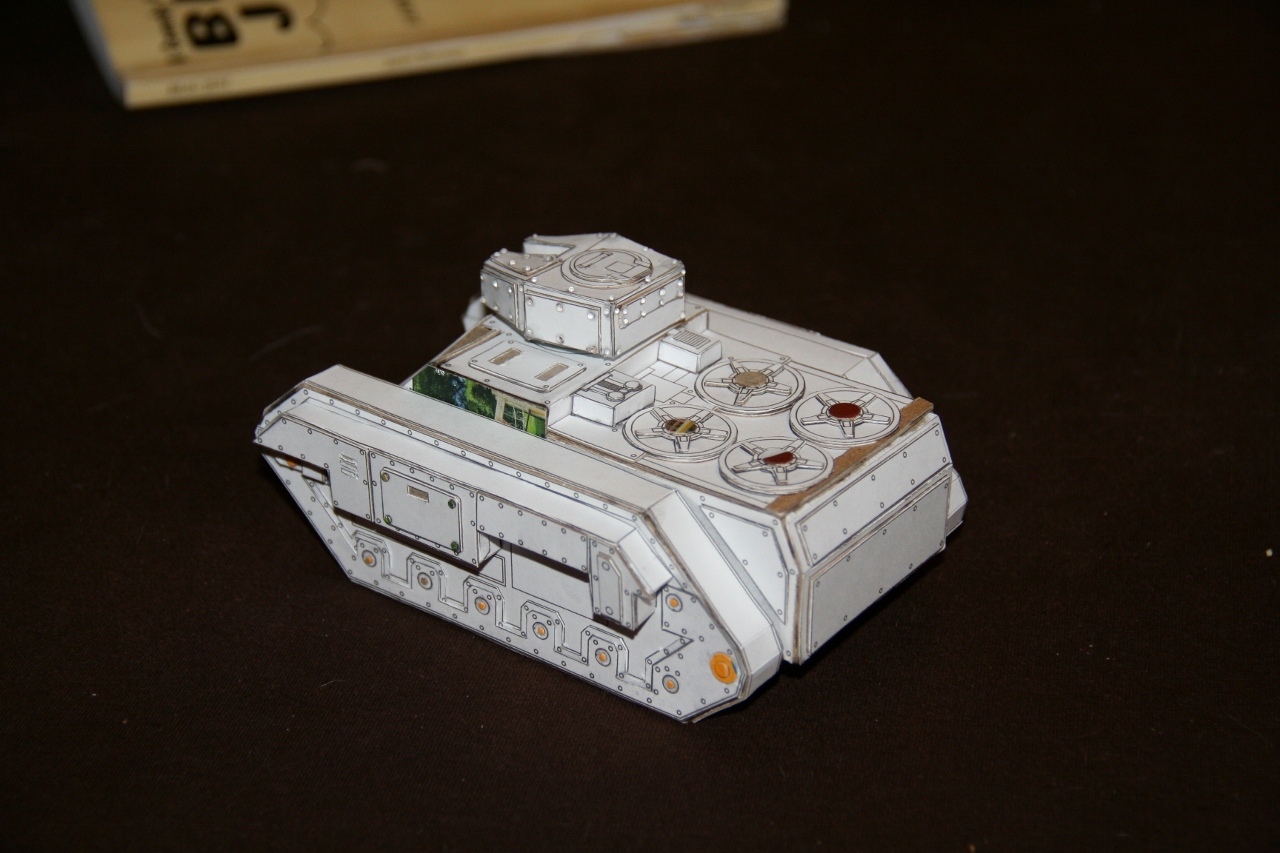
From this point I’ll continue adding details from the template and more rivets.
For the next tutorial I’ll start working on tracks and other details beyond the template.
See you then!
Scratch Building Tanks
- How to Make a Wargaming Table & Terrain Cheaply & Easily - November 6, 2017
- First Rebel Grot Armored Sentinel Painted! - December 19, 2016
- Assassinorum Execution Force Product Review from Games Workshop - May 6, 2015
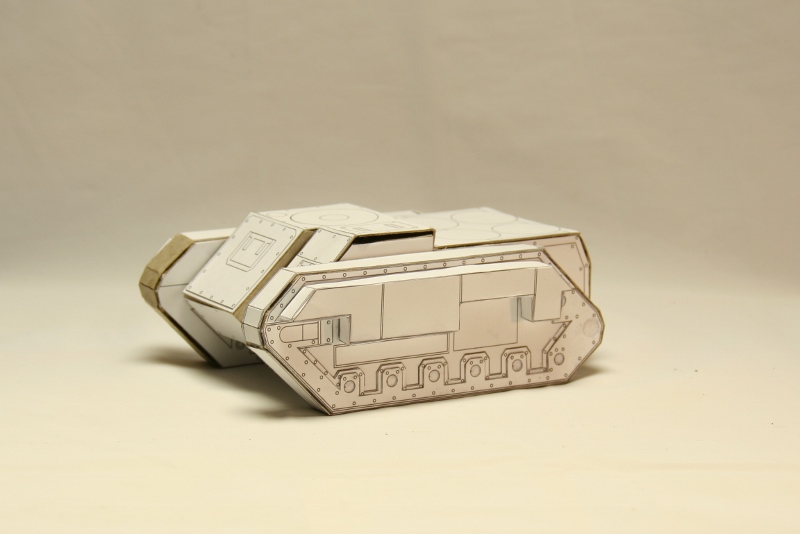
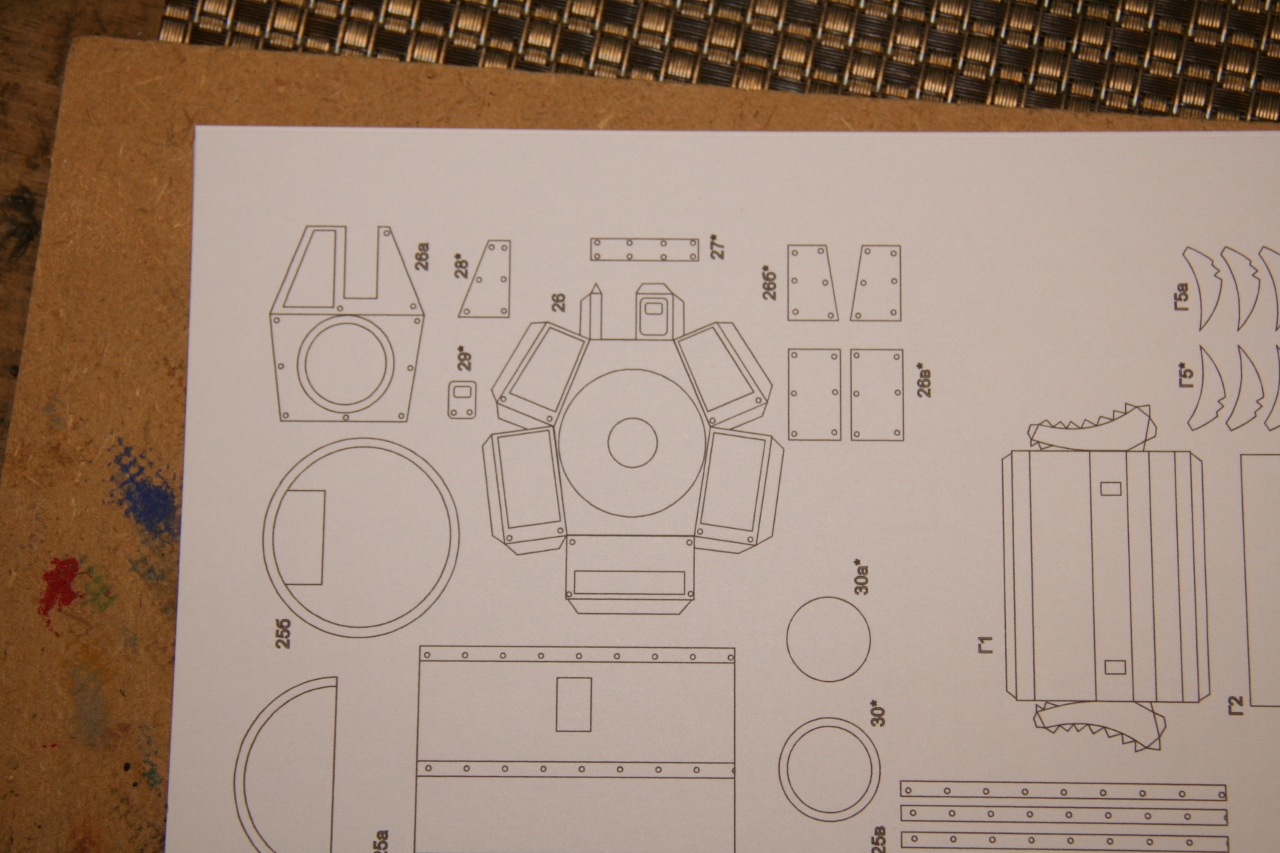
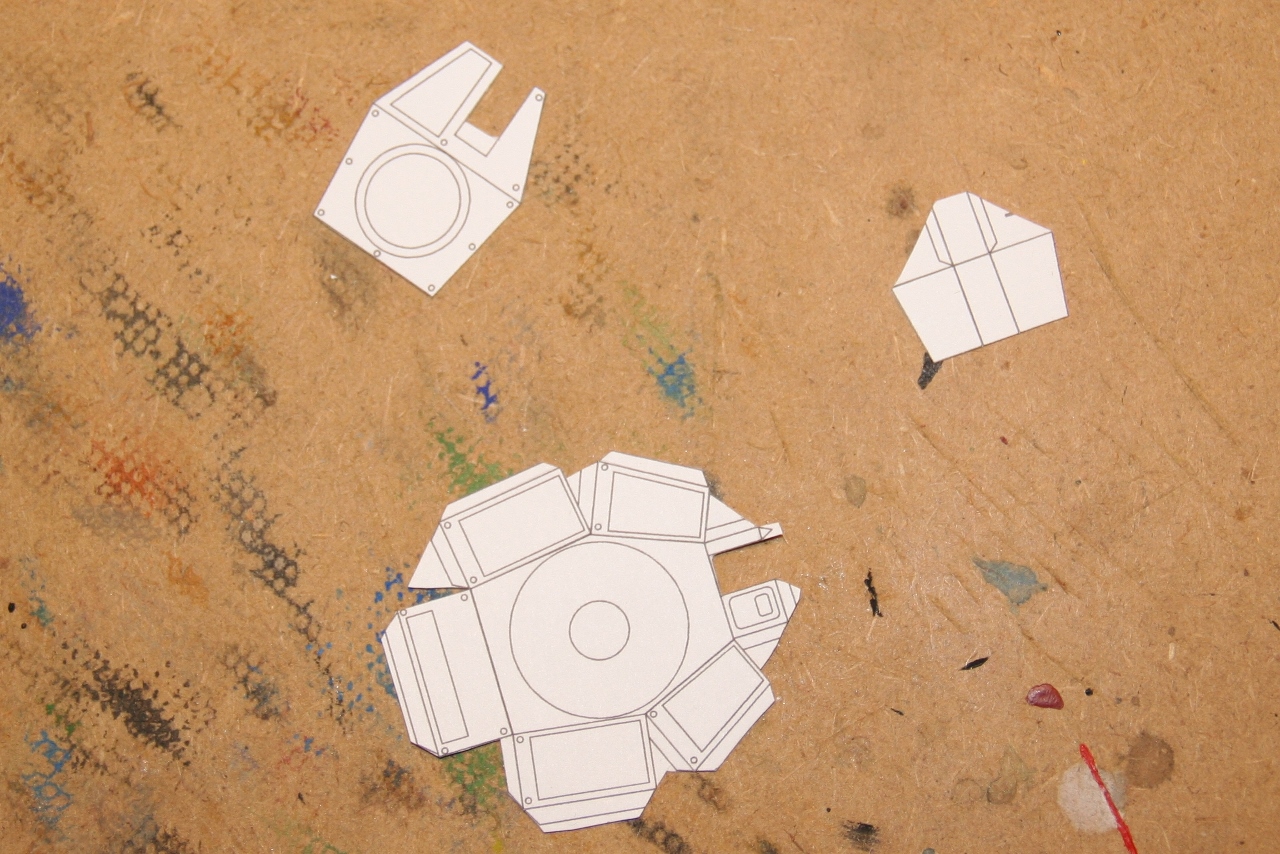
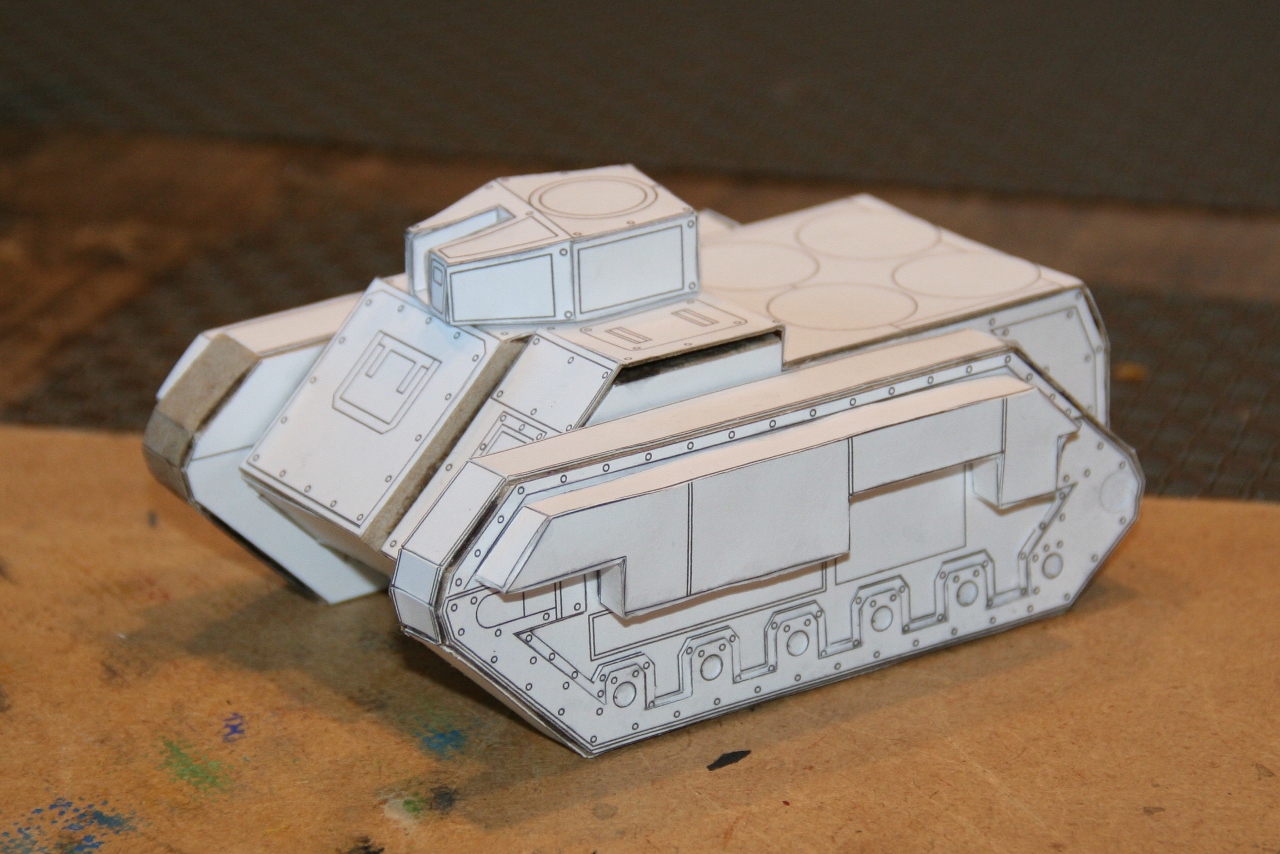
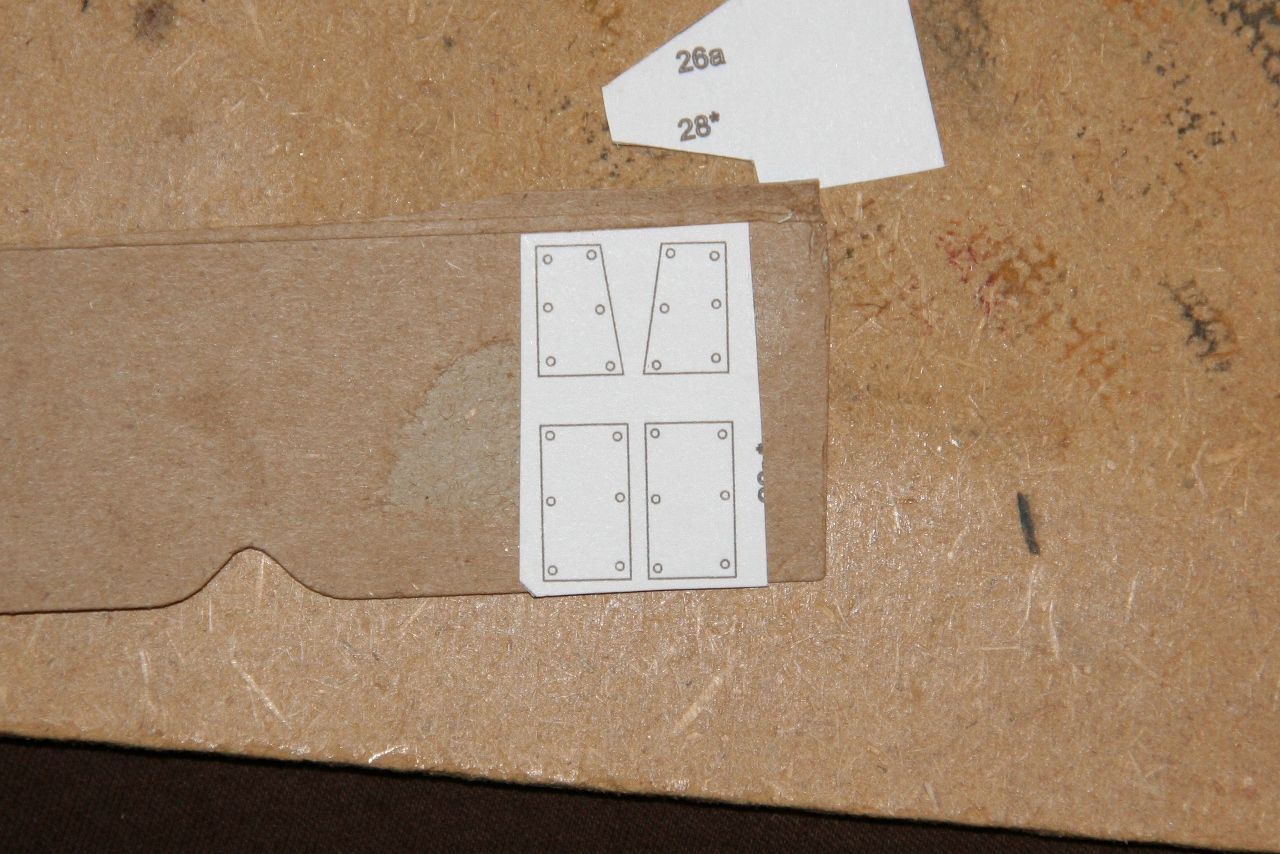

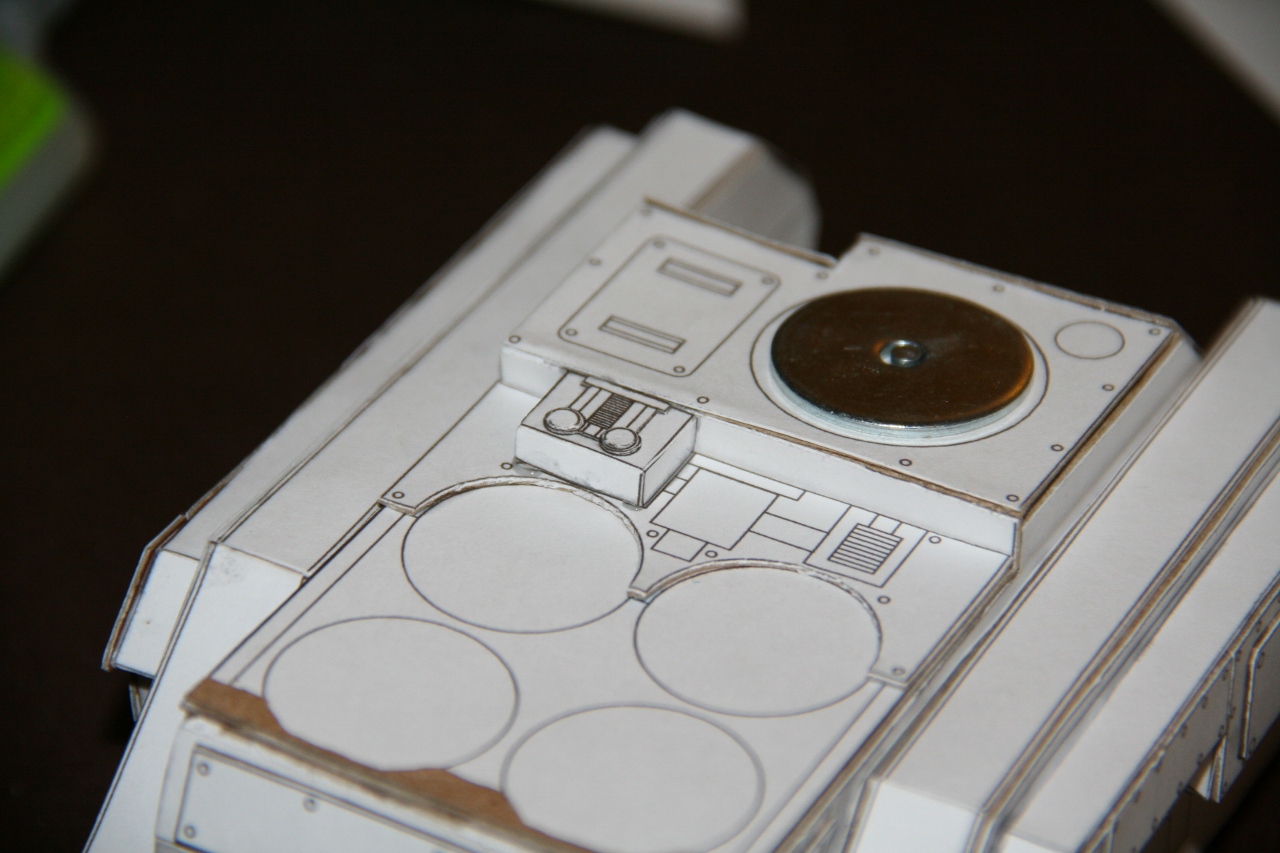

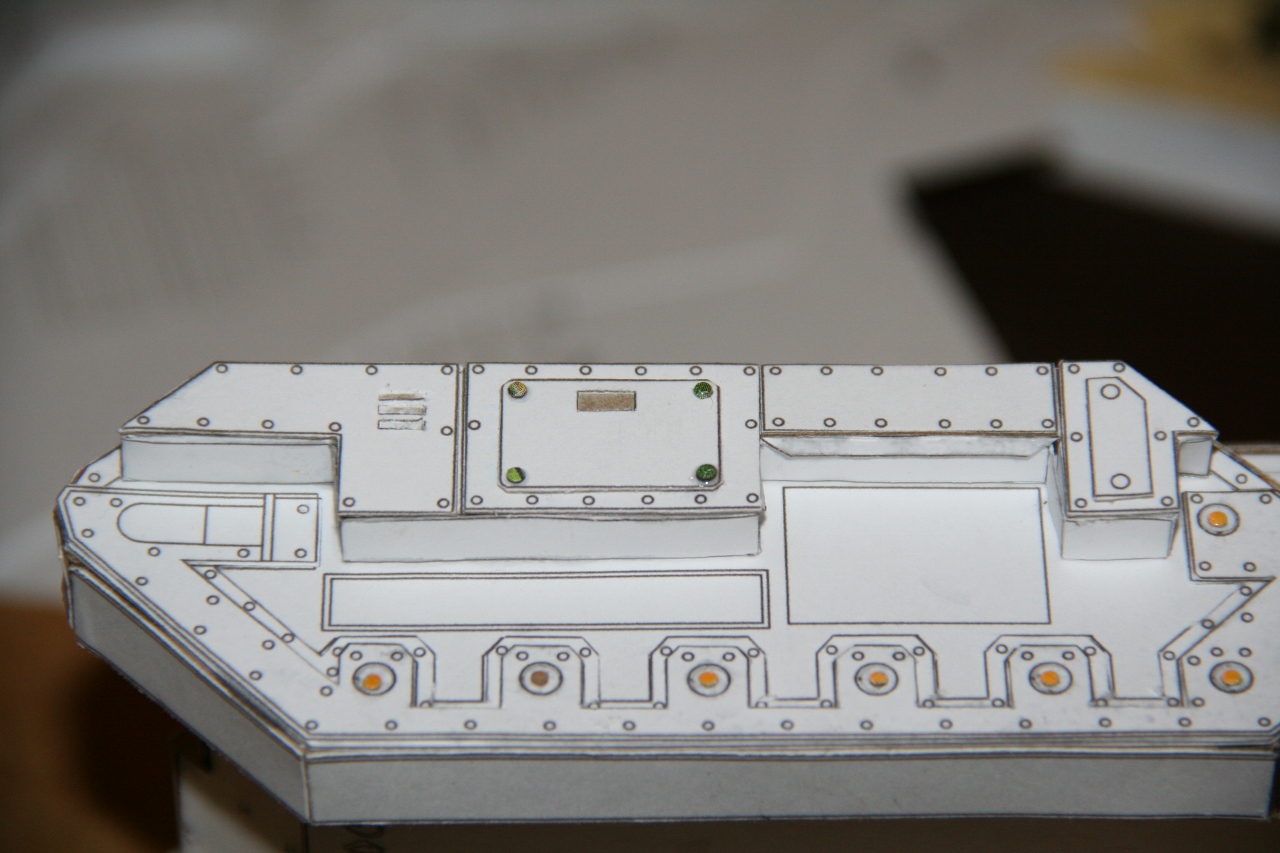

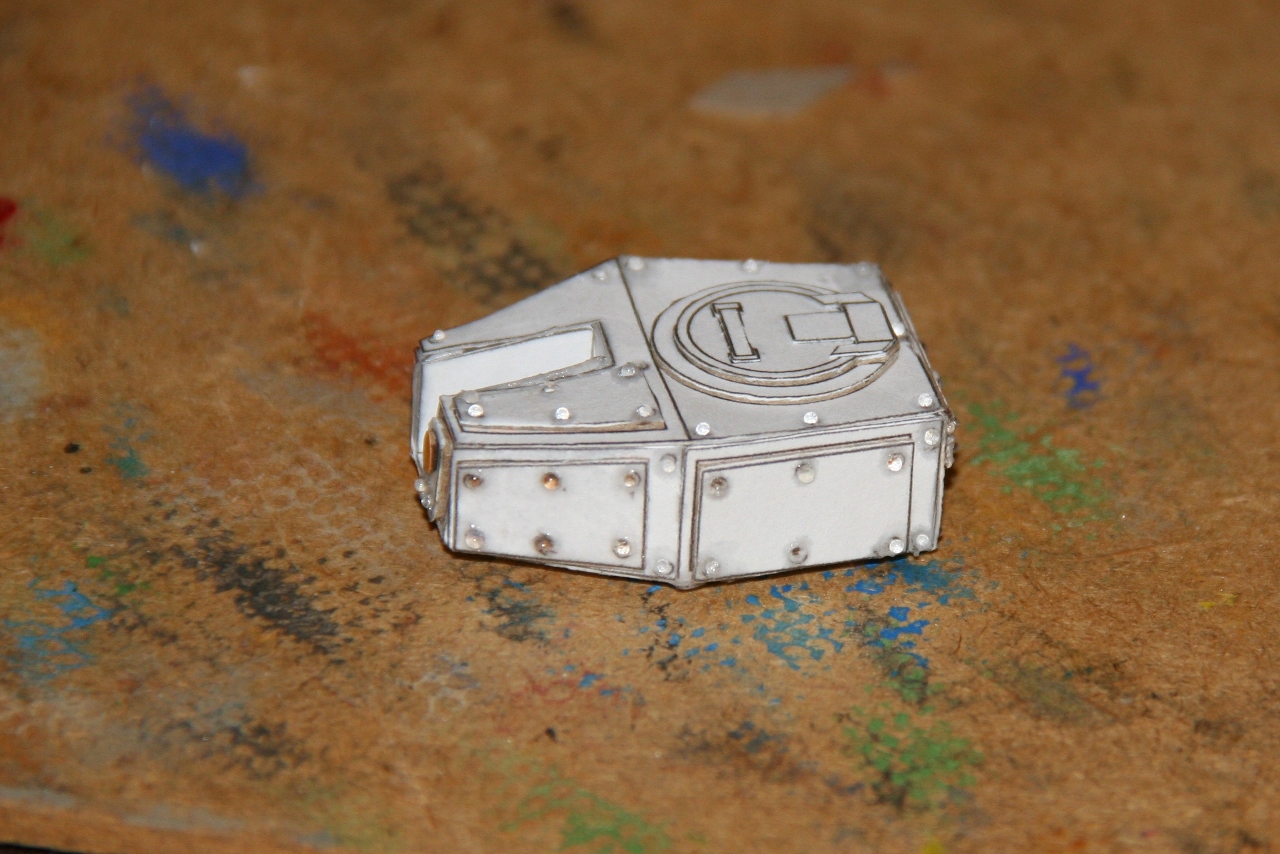


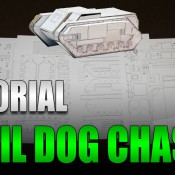
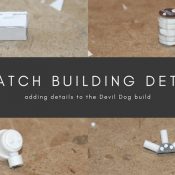
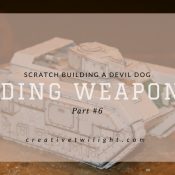
That’s coming along well. Is this your first start to finish conversion using the templates like this?
Thanks. All of my Rebel Grot tanks have started from the templates but the first two, the basilisk and first leman russ, were done in plasticard. The second russ and first chimera are cardboard up to the main chassis with plasticard details and armor plates over that. This one is as far as I’ve gone with paper and cardboard. It’s also the first time I’ve tried printing the templates on heavier stock.
In the next installment I’ll touch on how this can be finished with paper but I’ll be moving on to other materials.
It is amazing how good these look on the table. How much Orkifying are you going to do to these?
Thanks! I want them to fit the character of the Rebel Grots but still be immediately recognizable as the Imperial vehicle they represent. They’ll get some extra decoration, weathering, and makeshift repairs but they won’t be as ramshackle as the vehicles I build for my Orks. The Basilisk I show in the first part of this tutorial is a good example of the level I’m looking to achieve.